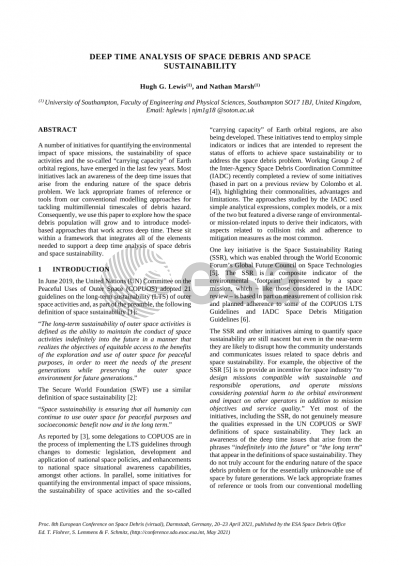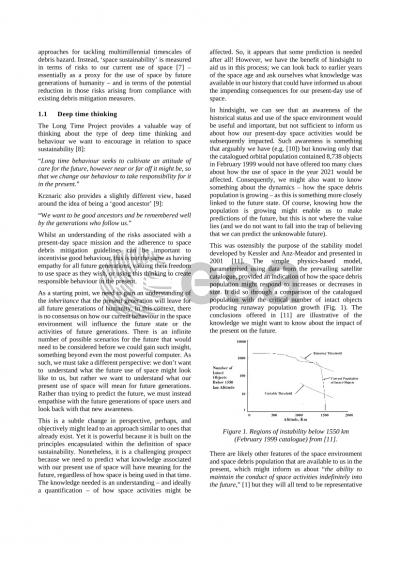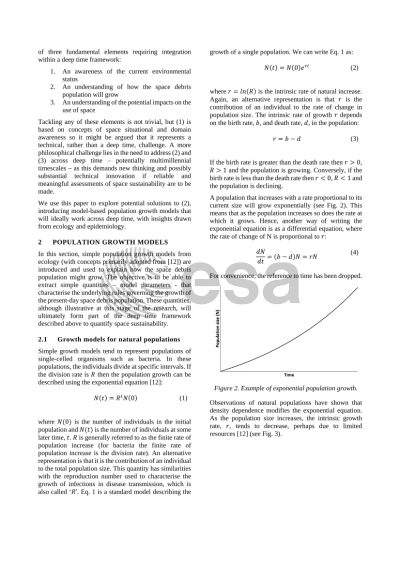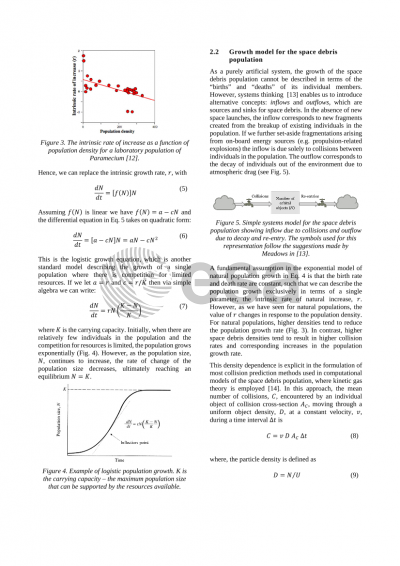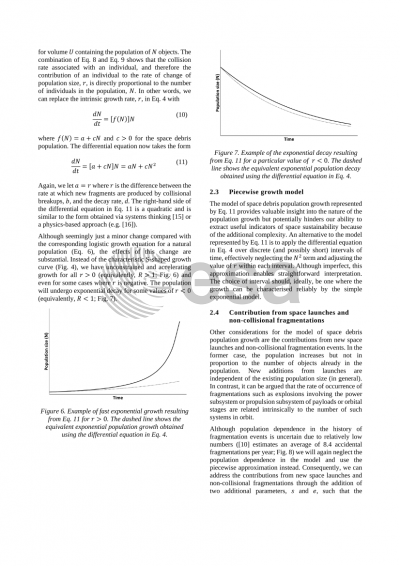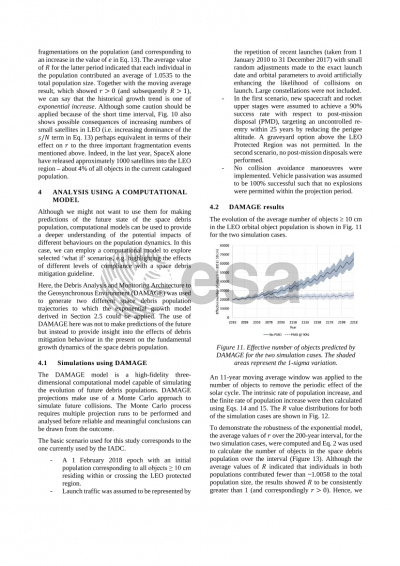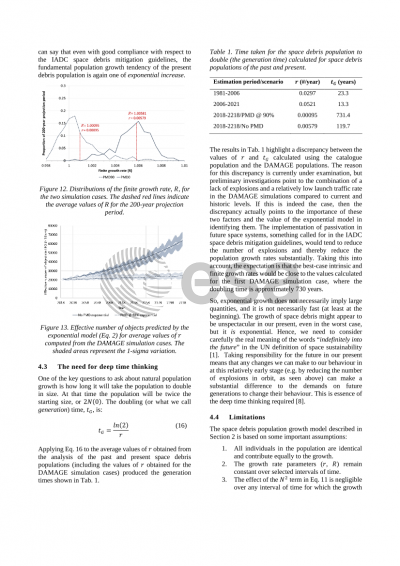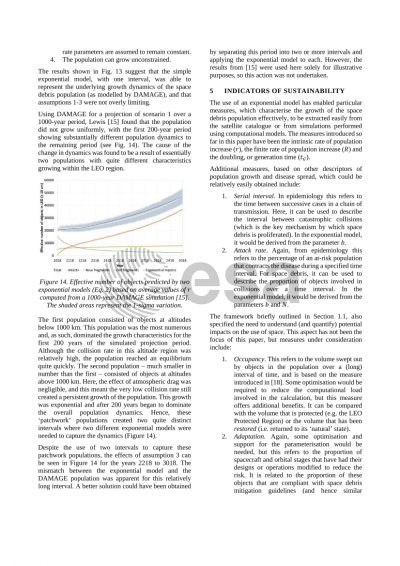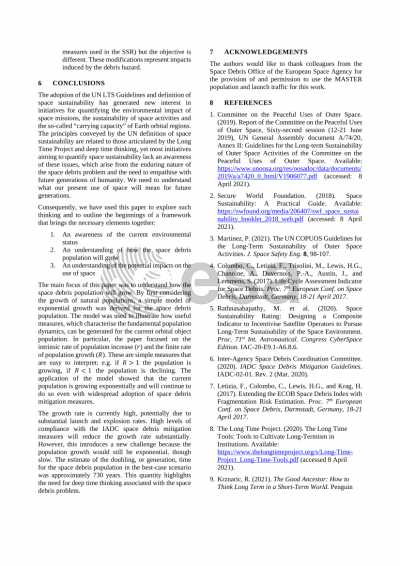Document details

Abstract
A number of initiatives for quantifying the environmental impact of space missions, the sustainability of space activities and the so-called “carrying capacity” of Earth orbital regions, have emerged in the last few years. These initiatives are still nascent but even in the near-term are likely to disrupt how the community understands and communicates issues related to space debris and space sustainability. An example is the Space Sustainability Rating, which seeks to evaluate space missions based on a combination of factors including the collision risk to other space systems, their trackability, and the adoption of debris mitigation practices. However, these initiatives lack an awareness of the deep time issues that arise from the definition of space sustainability, the enduring nature of the space debris problem and the complex evolution of human activity in Earth orbits over many generations. To address this, we propose a framework that incorporates and quantifies three key elements: (1) an awareness of the current environmental status, (2) an understanding of how the space debris population will grow, and (3) an understanding of the potential impacts on the use of space. Tackling the first of these elements is not trivial, but the need to address (2) and (3) across deep time – potentially multimillennial timescales – demands new thinking and possibly substantial technical innovation if reliable and meaningful assessments of space sustainability are to be made. We use this paper to explore solutions to (2) and introduce model-based approaches that work across deep time using insights drawn from ecology and epidemiology. We identify the limitations in existing efforts to quantify space sustainability and carrying capacity, and present a new approach that is better suited to the deep time analysis of space debris and space sustainability.
Preview
